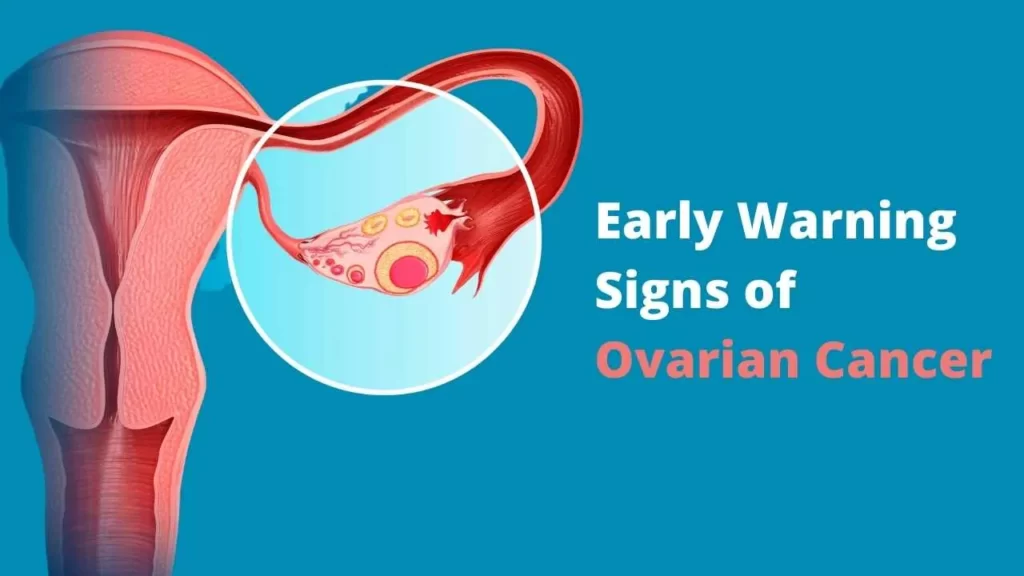Ovarian cancer is a complex disease that affects thousands of women worldwide. In this article, we will delve deeper into the topic, exploring the symptoms, detection methods, and the latest research findings on Ovarian cancer.

What is Ovarian Cancer
Ovarian cancer arises when abnormal cells in the ovaries grow uncontrollably, forming tumors. These tumors can be benign (non-cancerous) or malignant (cancerous). The majority of ovarian cancers are of the epithelial type, which originates from the cells that line the surface of the ovaries. Less common types include germ cell tumors and stromal tumors.

As China’s threat grows in Asia, Japan has opened a NATO liaison office to counter Beijing
Researchers have been tirelessly studying Ovarian cancer to better understand its causes and risk factors. While the exact cause remains unclear, certain factors have been identified that may increase the risk of developing ovarian cancer. These include a family history of ovarian or breast cancer, certain genetic mutations (such as BRCA1 and BRCA2), advancing age, and hormonal imbalances. However, it is important to note that having these risk factors does not necessarily mean an individual will develop ovarian cancer, and conversely, many women without any known risk factors can still develop the disease.
Ovarian Cancer Symptoms

It is often called the “silent killer” because it tends to present vague or subtle symptoms in the early stages. However, being aware of the potential warning signs can greatly aid in early detection. Here are some common symptoms associated with ovarian cancer:
Abdominal bloating or swelling: Persistent bloating or feeling that your abdomen is enlarged.
Pelvic discomfort or pain: Ongoing pelvic pain or a sense of pressure in the pelvic area.
Persistent indigestion or feeling full quickly: Difficulty in digestion, loss of appetite, or feeling full even after consuming small amounts of food.
Changes in bowel habits: Frequent constipation or diarrhea that is not normal for you.
Frequent urination: The need to urinate more often than usual, especially during the night.
Fatigue or low energy levels: Unexplained tiredness or a persistent lack of energy.
Unexplained weight loss or gain: Significant and unexplained weight loss or gain without any known cause.
Back pain: Persistent pain in the lower back that is not related to any physical strain or injury.
Abnormal menstrual cycles: Changes in the menstrual cycle, such as heavier or irregular periods.
It is important to remember that these symptoms can also be caused by other conditions unrelated to ovarian cancer. However, if you experience these symptoms frequently and they are not typical for you, it is advisable to consult a healthcare professional for further evaluation.
Polluted beach water makes swimmers sick, new pollution report warns: ‘Several troubling trends’
How to Detect Ovarian Cancer

Early detection plays a critical role in the successful treatment of ovarian cancer. Various methods can be employed to detect the disease in its early stages:
Self-Examination
Performing regular self-examinations can help you become familiar with your body and detect any changes in the pelvic region. While self-exams cannot diagnose ovarian cancer, they can alert you to any abnormalities that require medical attention. If you notice any unusual lumps, swelling, or persistent discomfort, consult your doctor.
Regular Check-ups and Pelvic Exams
Routine check-ups with your gynecologist are essential for maintaining good reproductive health. During these visits, your doctor may conduct a pelvic exam to assess the condition of your ovaries and other reproductive organs. They will check for any irregularities or abnormalities, such as enlarged ovaries or masses.
Imaging Tests
Imaging tests, such as transvaginal ultrasound and pelvic CT scans, provide detailed images of the ovaries and surrounding tissues. These imaging techniques can help identify any suspicious masses or tumors that may indicate ovarian cancer. Additionally, if a mass is detected, the imaging results can aid in determining the size, location, and characteristics of the tumor.
Blood Tests
Certain blood tests, such as the CA-125 test, are commonly used to aid in detecting ovarian cancer. The CA-125 test measures the levels of a protein called CA-125 in the blood. Elevated CA-125 levels can be an indication of ovarian cancer. However, it is important to note that CA-125 levels can also be elevated in non-cancerous conditions, such as endometriosis or pelvic inflammatory disease. Therefore, this test is not definitive and may require further evaluation.
Diagnosis of Ovarian Cancer

If ovarian cancer is suspected based on the symptoms and initial tests, further diagnostic procedures will be conducted to confirm the diagnosis. These may include:
Physical Examination
A physical examination involves a thorough evaluation of the pelvic region, including the ovaries, uterus, and surrounding tissues. Your doctor will carefully feel for any irregularities, such as enlarged ovaries or masses.
Imaging and Laboratory Tests
Advanced imaging techniques, such as MRI or PET scans, may be used to obtain detailed images and evaluate the extent of the disease. These scans can help determine if the cancer has spread beyond the ovaries and aid in staging the cancer.
Laboratory tests, including additional blood work and urine analysis, may also be performed to gather more information about your overall health and assess any potential markers associated with ovarian cancer.
Biopsy
A biopsy is the definitive method to confirm ovarian cancer. During this procedure, a small sample of tissue is taken from the ovaries or any suspicious masses and examined under a microscope for the presence of cancer cells. The biopsy can determine the type of ovarian cancer and provide valuable information for treatment planning.
Staging and Grading
Once the diagnosis is confirmed, the cancer will be staged and graded to determine its severity and the best treatment approach. Staging assesses how far the cancer has spread, evaluating whether it is confined to the ovaries or has metastasized to other areas. Grading assesses the aggressiveness of the cancer cells based on their appearance and behavior.
Latest Research and Future Perspectives
Researchers continue to study ovarian cancer to gain a better understanding of its underlying causes, improved diagnostic techniques, and more effective treatment options. Ongoing research aims to identify additional biomarkers and genetic factors associated with ovarian cancer, allowing for earlier detection and personalized treatment approaches. Additionally, clinical trials are investigating novel therapies, such as targeted therapies and immunotherapies, that show promise in improving outcomes for women with ovarian cancer.
Conclusion
Ovarian cancer is a complex disease with subtle symptoms, making early detection challenging. However, by being aware of the common symptoms and being proactive about regular check-ups and screenings, women can improve their chances of detecting ovarian cancer in its early stages. If you experience persistent symptoms or have concerns about your reproductive health, consult with your healthcare provider. Remember, early detection can significantly impact treatment outcomes and ultimately save lives.
1. How to check for ovarian cancer at home
A. Checking for ovarian cancer at home is not possible through self-diagnosis. However, women can be proactive by being aware of the common symptoms, such as abdominal bloating, pelvic pain, and changes in bowel habits. If any concerning symptoms persist, it is important to consult a healthcare professional for proper evaluation and diagnosis.
2. What is the main cause of ovarian cancer?
A: The exact cause of ovarian cancer remains unknown. However, certain risk factors, such as family history, genetic mutations, age, and hormonal imbalances, may increase the likelihood of developing ovarian cancer.
3. Can ovarian cancer be prevented?
A: While it may not be possible to prevent ovarian cancer entirely, certain risk-reducing strategies, such as maintaining a healthy lifestyle, using birth control pills, and considering prophylactic surgery in high-risk cases, may help lower the risk.
4. What age group is most commonly affected by ovarian cancer?
A: Ovarian cancer can affect women of all ages, but it is most commonly diagnosed in women over the age of 50. However, it’s important to note that ovarian cancer can occur in younger women as well.
5. Can ovarian cancer be cured?
A: The prognosis for ovarian cancer depends on various factors, including the stage at diagnosis, the type of cancer, and the individual’s overall health. Early detection and timely treatment offer the best chances of successful outcomes, but each case is unique. It is important to consult with healthcare professionals for personalized advice and treatment options.